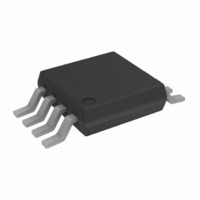ADP2291ARMZ-R7 Analog Devices Inc, ADP2291ARMZ-R7 Datasheet - Page 12

ADP2291ARMZ-R7
Manufacturer Part Number
ADP2291ARMZ-R7
Description
IC CHARGER LI-ION 4.2V 8MSOP
Manufacturer
Analog Devices Inc
Datasheet
1.ADP2291ARMZ-R7.pdf
(20 pages)
Specifications of ADP2291ARMZ-R7
Battery Type
Lithium-Ion (Li-Ion)
Function
Charge Management
Voltage - Supply
4.5 V ~ 12 V
Operating Temperature
-40°C ~ 85°C
Mounting Type
Surface Mount
Package / Case
8-TSSOP, 8-MSOP (0.118", 3.00mm Width)
Input Voltage
12V
Battery Charge Voltage
4.2V
Charge Current Max
1.5A
Battery Ic Case Style
MSOP
No. Of Pins
8
No. Of Series Cells
1
Lead Free Status / RoHS Status
Lead free / RoHS Compliant
For Use With
ADP2291-EVAL - BOARD EVAL FOR ADP2291LI
Lead Free Status / RoHS Status
Lead free / RoHS Compliant, Lead free / RoHS Compliant
Other names
ADP2291ARMZ-R7
ADP2291ARMZ-R7TR
ADP2291ARMZ-R7TR
ADP2291
APPLICATION INFORMATION
SETTING THE MAXIMUM CHARGE CURRENT
The maximum charge current is set by choosing the proper
current sense resistor, R
The charger nominally regulates its output current at the point
where the voltage across the current sense resistor V
(defined as V
by pulling down on the ADJ input, which is internally attached
through a 100 k
from 3 V reduces V
of 50 mV is reached when a 100 k
ADJ and ground. During slow charge, the voltage across the
current sense resistor is 15 mV with no connection to ADJ, and
it drops to 10 mV with a 100 k
Therefore, the maximum charge rate I
where 50 mV ≤ V
After determining suitable values for V
V
Examples of resistor combinations are shown in Table 4.
Table 4. Examples of RS and R
I
1.5 A
1 A
750 mA
500 mA
750 mA
500 mA
375 mA
250 mA
500 mA
333 mA
250 mA
167 mA
MAX
ADJ
and R
R
V
I
ADJ
MAX
ADJ
= 100 kΩ ×
=
ADJ
=
V
V
RS
R
are calculated as
RS
RS
RS mΩ
100
100
100
100
200
200
200
200
300
300
300
300
) is 150 mV. This setpoint voltage can be adjusted
S
Ω
(
(
(
mΩ
mV
RS
mV
pull-up resistor to 3 V. Each volt of pull-down
66
RS
≤ 150 mV.
7 .
)
)
by 67 mV during fast charge. A minimum
⎛
⎜ ⎜
⎝
)
+
mV
3
S
, and the voltage on the ADJ input.
50
V
V
V
150
100
75
50
150
100
75
50
150
100
75
50
mV
−
ADJ
RS
Ω
V
ADJ
mV
ADJ
resistor attached to ground.
Ω
V
Selection
resistor is attached between
⎞
⎟ ⎟
⎠
MAX
RS
and R
is calculated as
V
3
2.25
1.87
1.5
3
2.25
1.87
1.5
3
2.25
1.87
1.5
ADJ
V
S
, the value of
IN
– V
R
Open
300 K
167 K
100 K
Open
300 K
167 K
100 K
Open
300 K
167 K
100 K
ADJ
CS
(1)
(2)
(3)
Rev. A | Page 12 of 20
SETTING THE MAXIMUM CHARGE TIME
The maximum charge time is intended as a safety mechanism
to prevent the charger from trickle charging the cell indefinitely.
It does not terminate charging under normal charging condi-
tions, but only when there is a failure to reach end-of-charge.
A typical cell charges at a 1 C rate in about 1.5 hours, depending
on the cell type, temperature, and manufacturer. Generally,
a three-hour time limit is sufficient to prevent a normal charge
cycle from being interrupted by the charge timer. It is recom-
mended that the cell manufacturer be consulted for timing
details.
The maximum charge time is set by selecting the value of the
CTIMER capacitor. Calculate the timer capacitance using
The precharge and end-of-charge periods are 1/6 the duration
of the fast charge time limit. The charge timers are completely
disabled by connecting the TIMER pin to ground. If the timers
are disabled, the FAULT and TIMEOUT states are never reached,
so the timers should only be disabled if charging is monitored
and controlled externally.
EXTERNAL CAPACITORS
Use an input supply capacitor (CIN) with a value in the
1 µF to 10 µF range and place it close to the ADP2291. This
should provide adequate input bypassing, but the selected
capacitor should be checked in the actual application circuit.
Check that the input voltage does not droop or overshoot
excessively during the start-up transient.
Use a battery output capacitor (COUT) with a value of at least
10 µF. This capacitance provides compensation when no battery
load is present. In addition, the battery and interconnections
appear inductive at high frequencies and must be accounted for
when the charger is operated with a battery load. Therefore, a
small amount of output capacitance is necessary to compensate
for the inductive nature of the battery and connections. Use a
minimum output capacitance value of 1 µF for applications
where the battery cannot be removed.
REVERSE INPUT PROTECTION
The Diode D1, shown in Figure 22 through Figure 25, is
optional. It is required only if the input adapter voltage can
be applied with a reverse polarity.
If the adapter voltage is high enough, a Schottky diode is recom-
mended to minimize the voltage difference from the adapter to
the charger input and the power dissipation. Choose a diode with
a continuous current rating high enough to handle battery charging
current at the maximum ambient temperature. Use a diode with a
voltage rating greater than the maximum adapter voltage.
CTIMER = t
CHG
(minutes) ×
1800
1
minutes
µF
(4)












